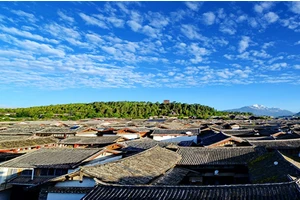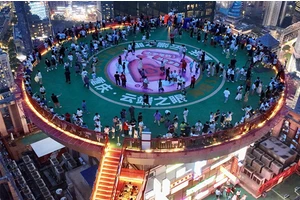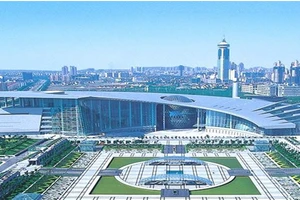What month does Hangzhou travel?
Spring (March to May) and autumn (September to November).
1. Spring (March to May): Spring is one of the most beautiful seasons in Hangzhou, with cherry blossoms, peach blossoms and camellias in full bloom. The flower sea by the West Lake is particularly charming, with a warm and comfortable climate, suitable for outdoor activities and strolling.
2. Autumn (September to November): In autumn, Hangzhou has a blue sky and a pleasant climate, which is the best time to enjoy autumn. The red leaf landscape in West Lake, Maojiabu and Lingyin Temple is very charming, with relatively few people and relatively quiet scenic spots.
Hangzhou has a warm and humid climate with four distinct seasons. Spring blossoms from March to April every year, which is the peak season for tourism, and the temperature is between 9-15℃, which is also the best season for tourism. From September to October, the weather turns cool and the autumn is crisp, but there is often strong cold air activity after the Mid-Autumn Festival, so you should prepare more clothes.
Hangzhou has different scenery all the year round, such as the willow waves and the warblers in spring, the wind and lotus in the Quyuan in summer, the autumn moon in Pinghu and the broken bridge in winter. But as a city in the south of the Yangtze River, it should be the most beautiful scenery in spring.
Hangzhou tourist attractions
I. West Lake in Hangzhou
West Lake is located in the west of Hangzhou city. Su Causeway and Bai Causeway divide the whole lake into five parts: Outer Lake, Lihu Lake, Yuehu Lake, Xili Lake and Xiaonanhu Lake. The West Lake has beautiful scenery and charming scenery, and has been a place of interest since ancient times. "Of the 36 West Lakes in the world, Hangzhou is the best." The West Lake is surrounded by mountains on three sides. In the Qin Dynasty, it was still a bay, with Baoshi Mountain in the north and Wu Shan in the south, and the water was relatively out of the corner of the bay.
Second, Xixi Wetland
Xixi National Wetland Park is located in the west of Hangzhou, Zhejiang Province, only 6 kilometers away from Wulinmen, the main city of Hangzhou, and 5 kilometers away from West Lake. Wetland Park is a national wetland park integrating urban wetland, agricultural wetland and cultural wetland. On November 3, 2009, it was included in the list of internationally important wetlands. On January 10, 2012, it was rated as a national AAAAA-level tourist attraction. Xixi Wetland is the first and only national wetland park integrating urban wetland, agricultural wetland and cultural wetland in China.
Third, phoenix temple
Phoenix temple was built in the Tang Dynasty and rebuilt by the Persian Islamic master Aladdin in the first year of the Yuan Dynasty. The main hall is bright and dark, and there are pyramidal roof with great contraction. The spire in the middle hall is octagonal, the spires on both sides are hexagonal, and the black tiles are matched with white walls, which is the perfect combination of China architecture and Arab architecture. There are no complicated decorative patterns and domes, but the elegance and simplicity of Jiangnan architecture. Phoenix temple is crowded in the room sea, and it is necessary to find a good angle to see the spire of phoenix temple, the white wall and the phoenix with wings spread.
Fourth, Lingyin Temple
Located at the foot of Lingyin Mountain of West Lake in Hangzhou, next to Feilai Peak in the west of West Lake, not far from West Lake. Lingyin Temple, also known as Yunlin Temple, was founded in the Eastern Jin Dynasty (AD 326) and has a history of more than 1,600 years. It is one of the ten Buddhist Zen temples in China. At that time, the Indian monk Huili came to Hangzhou and saw the wonderful peaks here. He thought it was "hidden by fairy spirits" and built a temple here, named Lingyin. Later, Jigong became a monk here, and Lingyin Temple became famous because of his well-known stories about the game world.
Expand knowledge:
Hangzhou, the capital of Zhejiang Province for short, is located in the southeast coast of China, the northern part of Zhejiang Province, the lower reaches of Qiantang River and the southern end of the Beijing-Hangzhou Grand Canal. It is a sub-provincial city, which is the political, economic, cultural, educational, transportation and financial center of Zhejiang Province, one of the central cities of the Yangtze River Delta urban agglomeration, the core city of Greater Bay Area around Hangzhou Bay, the node city of the Ning Hang eco-economic belt in the Yangtze River Delta and one of the important e-commerce centers in China. As of 2017, Hangzhou has 10 districts, 2 counties and 1 county-level city, with a total area of 16,596 square kilometers, a permanent population of 9.468 million and an urbanization rate of 76.8%.
Hangzhou has a history of more than 2,200 years since the establishment of the county government in the Qin Dynasty. It was once the capital of Wu Yueguo and the Southern Song Dynasty. Since the new century, driven by high-tech enterprises such as Alibaba, Internet economy has become a new economic growth point in Hangzhou.






